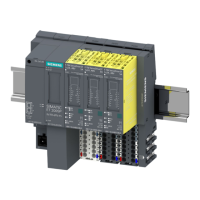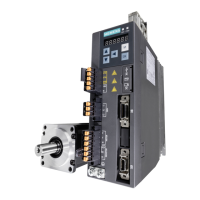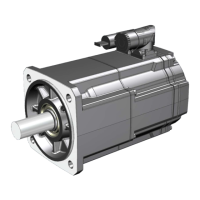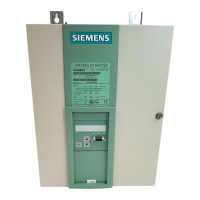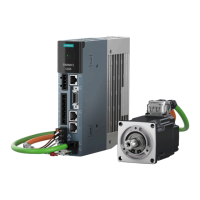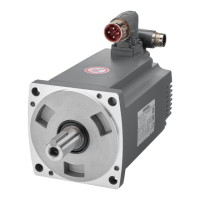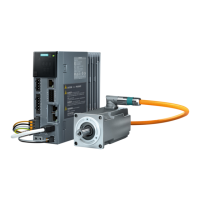10 Stepping motor parameters and characteristics 02.05
© Siemens AG 1998 All Rights Reserved
10-2 FM-STEPDRIVE/SIMOSTEP (FB)
A number of certain parameters and characteristics must be known for
examining and selecting a stepping motor. Each stepping motor has its
specific properties in conjunction with the power controller used; these
properties are represented by characteristic curves. To facilitate an
understanding of their contents and meaning, the essential parameters
and the usage of the characteristics are explained here.
10.1 Basic concepts
Step angle
A step refers to a motor shaft rotation by the step angle ; the step is
initiated by a control pulse.
Number of steps
The number of steps specifies the number of steps the rotor performs per
revolution. The number of steps can be adjusted for a 3-phase stepping
motor.
Holding torque
The rotor is held in each step position due to the DC excitation of the coils
unless its holding torque M
H
is exceeded on the motor shaft.
Systematic angle
tolerance
The systematic angle tolerance per step ∆α
s
specifies the maximum
number of angular minutes a step may deviate from the nominal step
angle.
Control and stepping
frequency
With a continuous sequence of control pulses at a control frequency f
S
,
the motor shaft will also execute a sequence of steps at the (same)
stepping frequency f
Z
.
Speed
From a specific control frequency onwards (depending on motor type and
mechanical load) the step-by-step movement of the motor shaft verges
into a continuous rotary movement. The following then applies fro the
speed n of the motor:
n = α/360° · f
Z
· 60 r.p.m. (f
z
[Hz])
Torques
If the rotating motor shaft is subjected to a load torque M
L
, the motor will
continue to follow the control frequeny synchronously unless the load
torque exceeds a certain limit, i.e. the maximum torque at maximum slew
stepping rate M
Bm
.
In this case, the rotor cannot follow the control frequency any more, and a
step “loss” will occur, where control frequency and stepping frequency are
no longer identical.
Such a situation can be avoided by selecting the correct motor and by
controlling it correctly
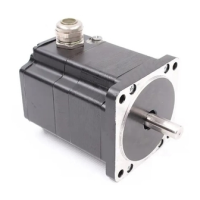
